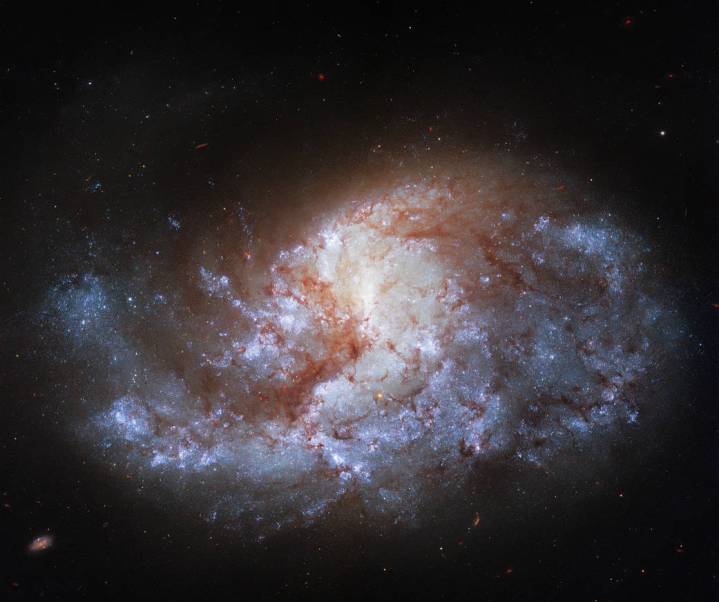
This beautiful image captured by the Hubble Space Telescope may look peaceful, but it shows galaxy NGC 1385, which is located around 68 million light-years away in a constellation with a fiery name: Fornax, which means “furnace” in Latin.
“The constellation was named Fornax by Nicolas-Louis de Lacaille, a French astronomer born in 1713,” the Hubble scientists write. “Lacaille named 14 of the 88 constellations we still recognize today. He seems to have had a penchant for naming constellations after scientific instruments, including Atlia (the air pump), Norma (the ruler, or set square), and Telescopium (the telescope).” Lacaille spotted this particular constellation on a trip to the Cape of Good Hope in 1751, and he decided to name it after a chemist’s furnace in honor of the work being done by chemists at the time.
As for Hubble, this grand old telescope has had a difficult time lately, as it suffered from a computer error that caused all of its science instruments to be automatically switched into safe mode, during which time they do not collect any data. After some fast troubleshooting from the ground, engineers determined that the problem was in a piece of hardware that controls the science instruments, called the Science Instrument Command and Data Handling (SI C&DH) unit, and its power system, the Power Control Unit (PCU).
Fortunately, Hubble carries backup hardware in case an error like this occurs. After careful tests and preparations, the team was able to switch over to this backup hardware and get Hubble back up and running.
At over 30 years old, Hubble is getting on in years, and these kinds of errors are to be expected. This is one reason NASA plans to launch the James Webb Space Telescope soon, which will act as the successor to Hubble.
Editors' Recommendations
- Celebrate Hubble’s 34th birthday with this gorgeous nebula image
- Hubble discovers over 1,000 new asteroids thanks to photobombing
- This beautiful nebula holds a starry mystery at its heart
- Stunning image shows the magnetic fields of our galaxy’s supermassive black hole
- Hubble captures the dramatic jets of a baby star




